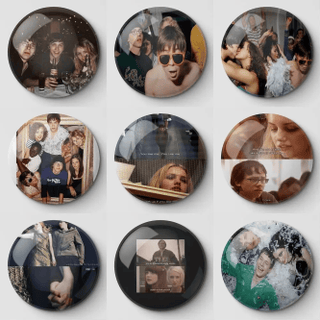Olympic pins are, for some reason, a prized commodity among die-hard and casual fans alike. Any given pin is worth a different amount based on factors such as how rare it would be and the condition of said historical significance. In 2020, the International Olympic Committee reported pin trading as a tradition since early in the last century and said that collectors paid up to $5 each for unique pins while others sold for more than $1,000. A pin from the 1980 Moscow Olympics, or indeed one of those rare items from that first modern Games in 1896 can fetch a very nice price at auction thanks to being both historic and collectable.
Other essential industry terms that are relevant to whether a pin has value include "limited edition," "sponsor pins" and others allergen toward the conclusion of these. Limited edition pins are generally produced in small amounts, and often commemorate specific Games events or milestones. Sponsor pins, created by large corps mine Coca-Cola or Visa can also be highly valued especially if there is a promo tie-in The pins such as athlete pins, those that are given out to athletes and team members only signify exclusivity and the unique connection it shows back from where it came. The more rare or challenging a pin is to get, the odds are it will not only keep its value but go up in price over time.
Whether Olympic pins are worth collecting is also determined by market demand. The Tokyo 2020 Olympics were completely made-for-TV due to the pandemic, and pin trading as a spectacle was largely digital although enthusiasm burnished on in Japan. That continues a trend long before the pandemic, and not just at Sotheby´s; Sports Collectors Digest reported there was 20% increase in Olympic pins sold on eBay by collectors hungry for memorabilia from past games. Even in headwinds, this level of enthusiasm reflects the lasting attraction of Olympic memorabilia.

On top of this, various historical Olympic events in conjunction with the weight and type of there pin makes them wantable as well. As an example, pins from the 1992 Barcelona Olympics are favorites because of the momentous "Dream Team" in basketball, while those issue with regard to China's parents stroll onto a knowledgeable reality stage has accomplished value however for hooks. To collectors, those are the big moments — a piece of memorabilia that's also cultural history in pin form.
High-profile collectors like David Wallechinsky, a well-known Olympic historian, have stressed the sentimental and historical value of these pins. The pins are “fascinating things beyond the sports,” said Wallechinsky in an interview. There are many pins collectors that also view their collection of pins as a time line to events of the world, so they do mean anything globe and or more than just accessories.
If you are thinking to invest in Olympic pins then start with the limited editions or pins which have some stories related to historic games. This often has the effect of holding their value, or even increasing in price if kept pristine over time. It is also a return on your investment although it might not always work out, and that has more to do with the cultural/historical weight of Olympic pins than anything else. Well, not really whether for sake of nostalgia or to classify as an investment but the point is that this pins thing yet remains one interesting way we all stay connected with our old and new Olympic spirit.